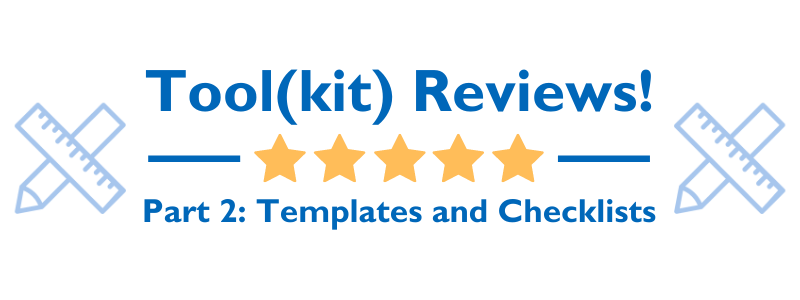Tool(kit) Reviews! Part II: Templates and Checklists

In this three-part blog series, staff across USAID share their go-to resources from Learning Lab’s CLA, Monitoring, and Evaluation Toolkits. Read their tool(kit) reviews for tips on practical application, and be inspired to try out new tools with your team for better development programming!
Part II: Templates and Checklists
Part III: Interactive Tools
---------------
The Little Crosswalk that Could
By Jennifer Kuzara, Team Lead Surge Support, Bureau for Policy, Planning and Learning's Program Cycle Mechanism
Resource/Tool: Standard Foreign Assistance Indicators and USAID Performance Indicator Reference Sheet (PIRS) Crosswalk
Featured in: Monitoring Toolkit
⭐⭐⭐⭐⭐
Five stars!!! I think this tool is a true unsung hero in the Monitoring Toolkit. It’s practical, concrete, easy-to-follow, and meets a pressing need that implementing partners and Mission monitoring, evaluation and learning (MEL) staff both have. It’s also one of the few tools in the Monitoring Toolkit that directly addresses the requirements Missions have to collect F Standard Indicator data and report it in the PPR. F Standard Indicators get a lot of hate, but they are still an integral part of how Missions approach monitoring, they are required of essentially all implementing partners, and they are one of the few data revenues (a term I heard a Global Health colleague use once and loved it) that Pillar Bureau staff have. Moreover, even though some implementing partners feel hamstrung by the F Standard Indicators, many others truly appreciate having indicators that are ready-made and available off the shelf. It eases the burden a bit, especially for implementing partners new to working with USAID, if they don’t have to generate and define every single indicator themselves. This little tool is an essential bridge in practical application of F Standard Indicators, and it doesn’t get enough love.
------------
The Greatest Thing Since Sliced Bread
By Amy Prevatt, Program Cycle Specialist, Bureau for Policy, Planning and Learning's Program Cycle Mechanism with the Bureau for the Middle East
Resource/Tool: Evaluation Statement of Work Checklist and Review Template
Featured in: Evaluation Toolkit
⭐⭐⭐⭐⭐
The Evaluation Statement of Work Checklist and Review Template is the greatest thing since sliced bread! Before this template, we often struggled to clearly communicate to Missions what information was required for an evaluation statement of work (SOW) and the specific contents needed in each section. Now we have a clear template for our Mission staff to use for their evaluation SOWs, which should help to improve the quality of evaluations. Thank you so much for developing this amazing resource! 5 stars (I wish I could give 6!)!
------------
Learning from the Past to Inform the Future
By Rick Spencer, Design Advisor, Bureau for Policy, Planning and Learning's Program Cycle Mechanism with the Bureau for Humanitarian Assistance
Resource/Tool: Learning Questions Checklist
Featured in: CLA Toolkit
⭐⭐⭐⭐⭐
At the Bureau for Humanitarian Assistance, my team was asked to review mid-term evaluations of a resilience food security program in the Democratic Republic of the Congo. Our challenge was to draw lessons learned from the mid-term evaluation and capture them to use in future designs of similar programs. The CLA Toolkit’s Learning Questions Checklist was a fantastic checklist to identify challenges encountered in the program to then factor into future designs! Kudos to Learning Lab!
-------------
Great Ideas for Pause & Reflect Activities
By Ruth Speyer, Organizational Development and Learning Specialist, Bureau for Policy, Planning and Learning's Program Cycle Mechanism
Resource/Tool: Facilitating Pause & Reflect
Featured in: CLA Toolkit
⭐⭐⭐⭐⭐
USAID has been using the phrase “Pause & Reflect” for a while now, and I think many of us are on board with how valuable it is to pause in our work and reflect on what’s happening, what it means, and what we may do as a result. But Pause & Reflect is a broad concept - how and when can we put it in action? This tool is a great resource to answer exactly this question. It features a list of 17 pause & reflect activities, each with a short description and related links for more information and guidance. I highly recommend this tool for anyone who’s looking for concrete ideas about when and how to pause and reflect.



